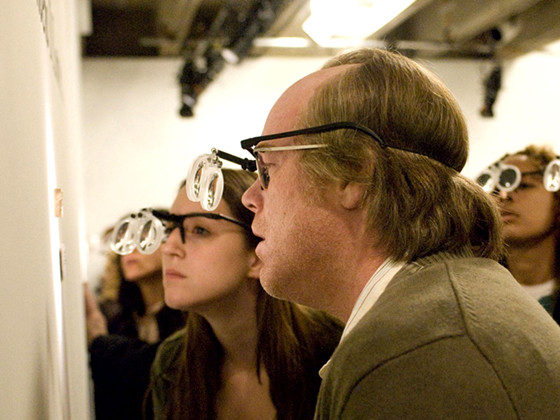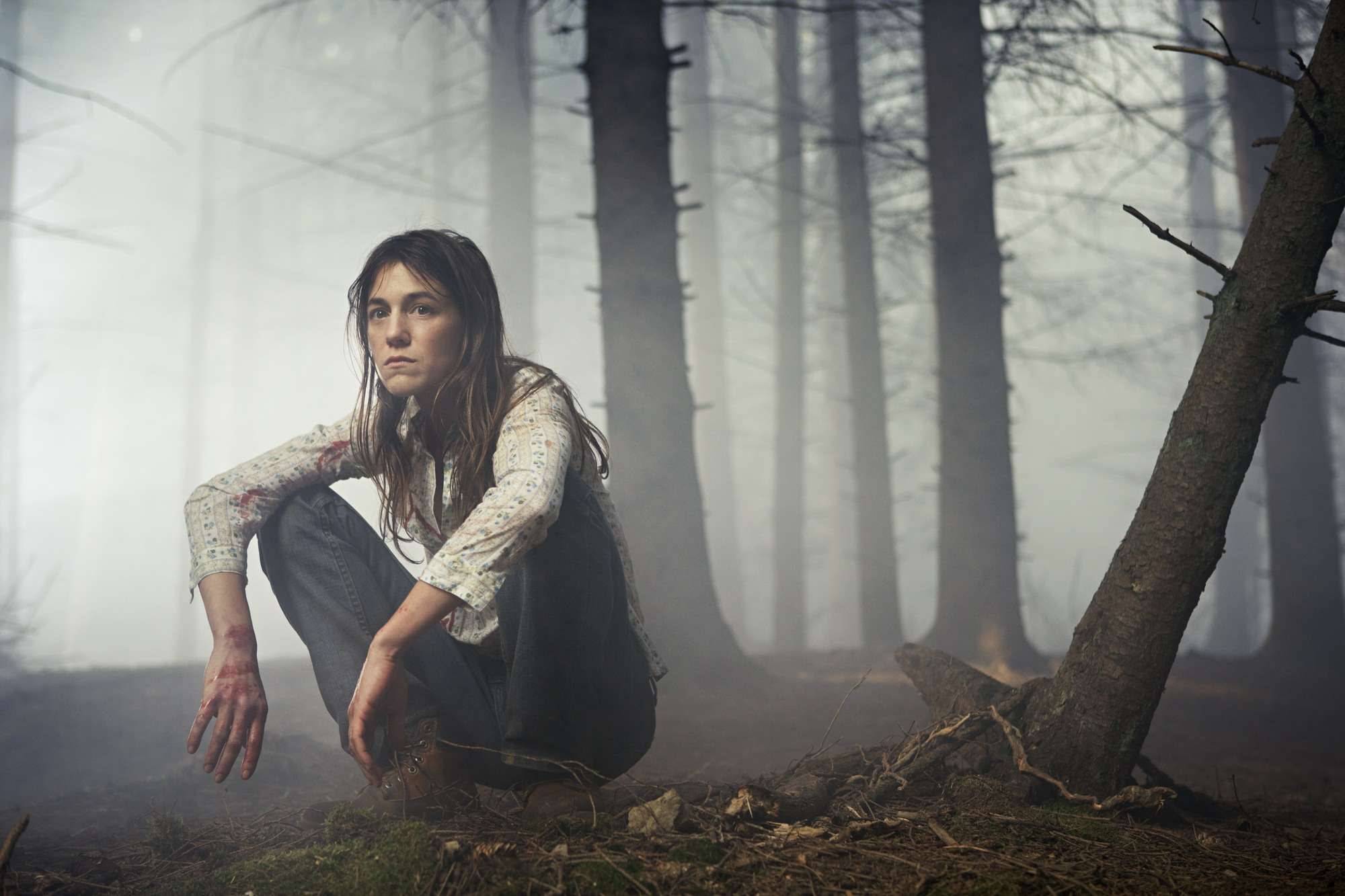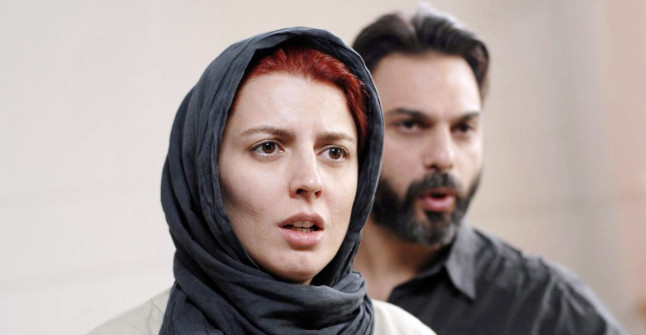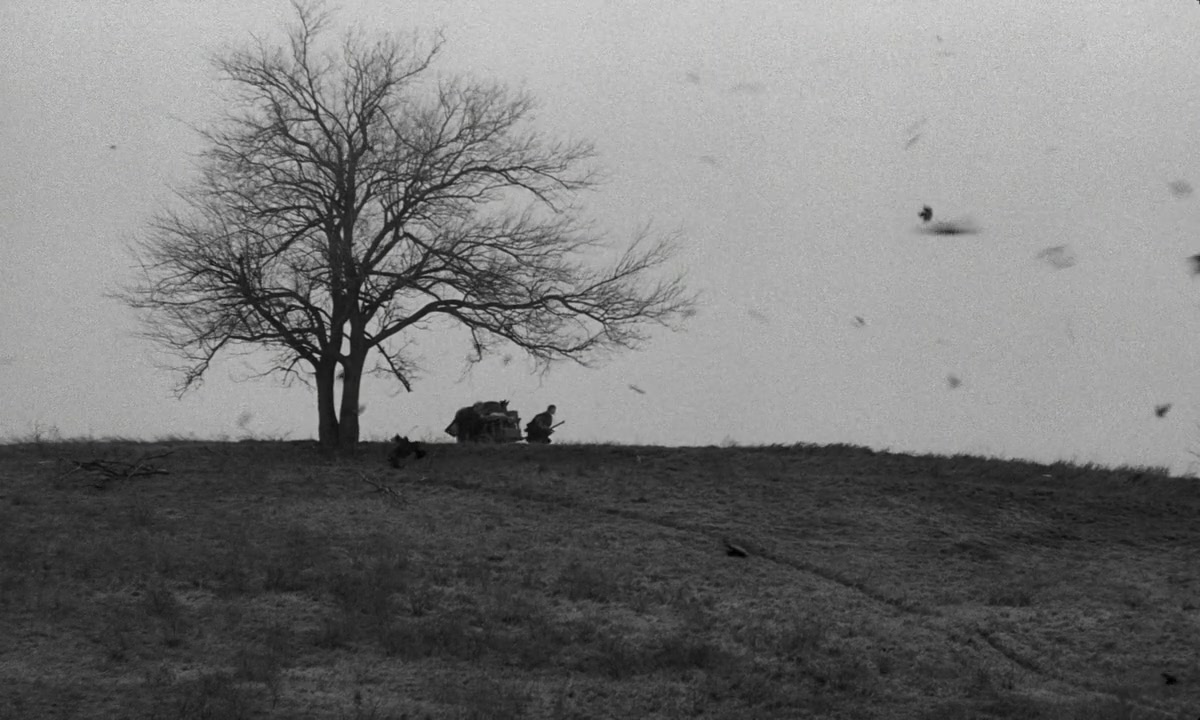6. Synecdoche, New York (2008)

Charlie Kaufman is a misunderstood genius. His screenplays – from “Being John Malkovich” (1999), “Adaptation” (2002), and “Eternal Sunshine of the Spotless Mind” (2004) to the later “Anomalisa” (2015) – are always warm and clever, with a strong sense of surrealism. “Synecdoche, New York” is no difference.
Caden Cotard (Philip Seymour Hoffman) is a theater director, suffering from an existential crisis and physical diseases; moreover, his marriage with Adele (Catherine Keener) is falling apart. After a big success with a play, he receives a MacArthur Fellowship, which will give him the economical possibility to write and direct his own play.
The film is a tour de force of emotions and feelings: it’s surreal, dramatic, oddly funny, touching, soulful, and poetic. It’s the description of the sadness and loneliness of life, a surreal Greek tragedy; when something can be worse, it’ll be that way.
Obviously, the great merit of the movie is the wonderfully chaotic and rich screenplay by Kaufman; even if this was his debut movie, we could regard him as an author, considering his prolific and coherent career as a screenwriter. His surrealistic and visionary take on common themes like love, death, life, struggle, and sadness is unmatched.
“Synecdoche, New York” is full of great actors and actresses – aside from Hoffman and Keener, there are Michelle Williams, Samantha Morton, Emily Watson, Jennifer Jason Leigh, and Tom Noonan – but the show is stolen by the astonishing performance of the late Philip Seymour Hoffman, in his best performance ever. His depiction of the dejected director is flawless.
Please Mr. Kaufman, don’t stop making movies! Ever!
7. Antichrist (2009)

A couple loses their child when he climbs through his bedroom window and falls out. The mother (Charlotte Gainsbourg) is devastated by grief and her husband (William Dafoe) tries to cure her through psychotherapy. In order to concentrate on her healing, they move to their cabin in the woods, called Eden. Her condition will start to worsen and her behavior will change dramatically and violently.
Lars von Trier shoots one on his most visually stunning and provocative movies. Shot mostly in color, with a black-and-white sequence, the movie is captivating and eye-catching, especially the scenes in the woods, with all the natural elements overhanging on the two main characters. The influence of Andrej Tarkovskij in the cinema of von Trier is explicit and – not by chance – the movie is dedicated to the late Soviet director.
Once again, psychoanalysis is the main presence in von Trier’s thematic agenda. At the same time, there’s the theme of depression – depicted by Charlotte Gainsbourg’s character – that makes an appearance in the first of the so-called “Depression Trilogy,” composed also of “Melancholia” (2011) and “Nymphomaniac” (2013).
When you think that you’ve seen everything from Lars von Trier, he’s always able to surprise you. In the case of “Antichrist,” there isn’t just surprise, but also shock and fear. It’s not an easy movie to watch, both for the complexity of the themes and some heavy moments of violence; however, watching the movie up until the last frame pays it all off. Cinema still proves to be thought-provoking and rebellious in the 21st century.
8. A Separation (2011)

Iran. Nader (Payman Maadi) and Simin (Leila Hatami) are husband and wife; Termeh (Sarina Farhadi) is their daughter. They live together with Nader’s dad (Ali-Asghar Shahbazi), who has Alzheimer’s disease.
Simin wants to leave the country in order to provide a better future for her family, while Nader wants to stay in his country to look after his dad. This quarrel compromises the unity of the family and Simin decides to leave the house and go living in her parents’ house, as a gesture of protest.
Because of Simin’s departure, Nader is forced to hire a caregiver to look after his ill dad while he’s working. Something bad will happen that will worsen the already critical situation.
“A Separation” is a wonderful and complex drama about a family; at the same time, the intimate portrait of this family is also an opportunity to reflect on Iranian society. Sometimes emotional and heartbreaking – especially the sequences with Nader’s dad – the film gives us an in-depth depiction of the religious garb and way of life of Iranians. Furthermore, it is shown – in a gentle and subtle way – the women’s role in a male-dominated society.
Talking about the technical specifics, the movie is set in very few environments – almost entirely in the house of Nader and Simin and in a police station – and it’s directed in a solid and bare way, without any kind of virtuosity.
Director Asghar Farhadi wanted to focus the movie on the evolution of the story, following the characters in a documentary-style tone. This picture show us that a simple story can be a great medium for an analysis on multiple themes. An unpretentious masterpiece.
9. The Turin Horse (2011)

The life of a family – a father and his daughter – goes on slowly and more monotonous every day, in the misery and disillusion of living an underprivileged life of poverty.
Few changes – the arrival of a man from the nearest town and the brief presence of a gypsy family – try to shift the daily routine of the two people, without any results. The wind continues to blow and the conditions start to get worse.
In “The Turin Horse,” we find all the peculiar traits of the directing style of Béla Tarr; the frequent use of long takes – the movie is composed of only 30 sequences – and the black and white.
Thematically, the picture revolves around the burden of life: it’s impossible for the characters to change their living for the best. They resign themselves to live their poor existence; even the external interferences don’t change their attitude toward their situation.
The sense of complete renunciation is perfectly depicted by the weather conditions: a cold and unceasing wind blows for the entire movie, making the tiring daily actions even harder. There’s no hope or positive side in the message: we are condemned to the harshness and pain of existence. Nothing can be made to reverse our destiny. One of the saddest and most touching films on the list. This movie is not for the weak of heart.
10. The Tree of Life (2011)

“The Tree of Life” isn’t just a movie: it’s philosophical research about life. We follow the events of a middle-class Christian family in Texas, over multiple time periods. Jack (Sean Penn) is the eldest son of the family; Mr. O’Brien (Brad Pitt) is an authoritarian and strict father – who wants to prepare his children to the brutal outside world – while Mrs. O’Brien (Jessica Chastain) is rigid but compassionate and affectionate, teaching her children about love and feelings. The family will go through tough times, due to dramatic events. Terrence Malick makes one of his best movies, dense with meaningful messages and deep analysis.
The main theme is the contraposition between nature and grace, represented metaphorically by the two parents: Mr. O’Brien is nature, overwhelming and violent, while Mrs. O’Brien is grace, which symbolizes love. At the same time, the troubled path to find the so-called “sense of life” is pretty evident in the movie, especially in the existential crisis of Jack and his pursuit for a better living, still marked by his dramatic past.
Visually, the picture is pure art and every shot could be a painting in its own right. DP Emmanuel Lubezki creates one of his best color works, with its use of natural lighting; the poetic use of voiceovers – a trademark of Malick – perfectly matches the overwhelmingly astonishing images.
There’s nothing to say more about “The Tree of Life.” It’s just perfect, without a single error. If you’re looking for pure art – and not only a movie – don’t look any further.